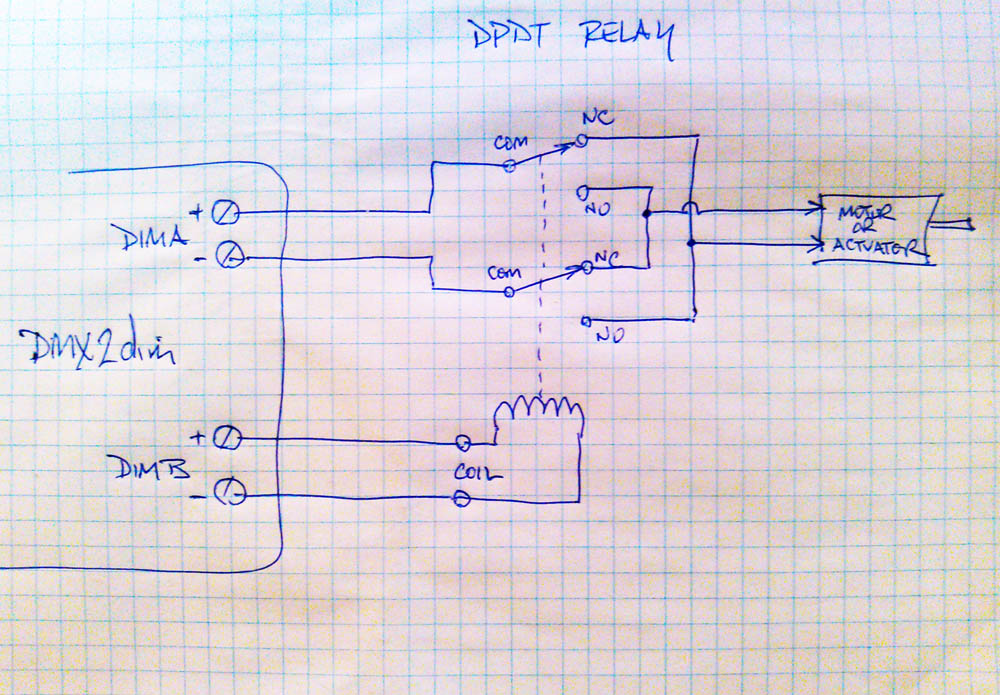I’ve had a small linear actuator on my trade-show table of tricks for years — some of you may have seen it at USITT Stage Expo, or the ABTT Show in London. It’s a little extendable “arm” that runs in and out using 2 channels of wireless DMX control.
How do you make a small DC motor or actuator change direction?
They change direction when you reverse the polarity of the power driving them: swap the red and black wires (the + and – leads) and they run the other way.
You need 2 channels of DMX assigned to two separate DC dimmer outputs, a small DPDT (double-pole, double-throw) relay, and — of course — the motor or actuator. One dimmer provides motor power, the other dimmer drives the coil of the relay. Connect the motor power through the contacts of the relay to provide one polarity when the relay is NO (normally open) and the opposite polarity when NC (normally closed).
Use the linear dimming curve for motor power. This lets you control motor speed. Use a non-dim curve for the relay, to ensure it is either open or closed. If you send dimmed power to a relay, it will chatter and not switch reliably.
Here’s a diagram of how to connect the relay to an RC4Magic DMX2dim dimmer. You’ll want to use a relay with a coil voltage that is the same as the motor, and run the whole thing at that voltage. A good choice would be 12V, but it can be anything from 6V to 24V when using our R3 dimmers; or 6V to 18V with our older dimmers.
One more detail that matters more for large loads than small, but is a good idea in all cases: put snubber diodes across both dimmers, right at the dimmer outputs. This is a high-current rectifier diode in the opposite polarity of power output. That is, the diode will NOT conduct, so you might think it’s pointless. In fact, when the motor is coasting, or being turned externally, it’s generating electricity in reverse polarity. The diode absorbs that energy, preventing it from getting back into the dimmer electronics. This is called “back-EMF” (EMF is electromagnetic force). Mechanical relays generate little snippets of back-EMF as well, when they release. There is some protection built-in to RC4 dimmers, but it never hurts to add another external diode.
There you have it: now you can make that drawbridge go up and down… or whatever else you want to do with a reversible DC motor.

One dimmer provides motor power, the other dimmer drives the coil of the relay. Connect the motor power through the contacts of the relay to provide one polarity when the relay is NO (normally open) and the opposite polarity when NC (normally closed).
In recent versions of firmware, RC4 dimmers also provide a DC Motor dimmer curve. This curve combines the two control channels into one, with the motor off in the center. You still need two dimmer outputs, with one driving the relay for direction. When raising the DMX level above half you control the speed in one direction; lowering below half spins in the other direction. You can access the DC Mot curve on RC4Magic devices using RC4 Commander software, and on LumenDim devices using RDM.
As a precaution, when using the DC Mot curve, the outputs are locked off until the DMX control level crosses 50% to enable power. That way, a motor won’t be spinning at full speed when you connect a DMX universe with all channels off.